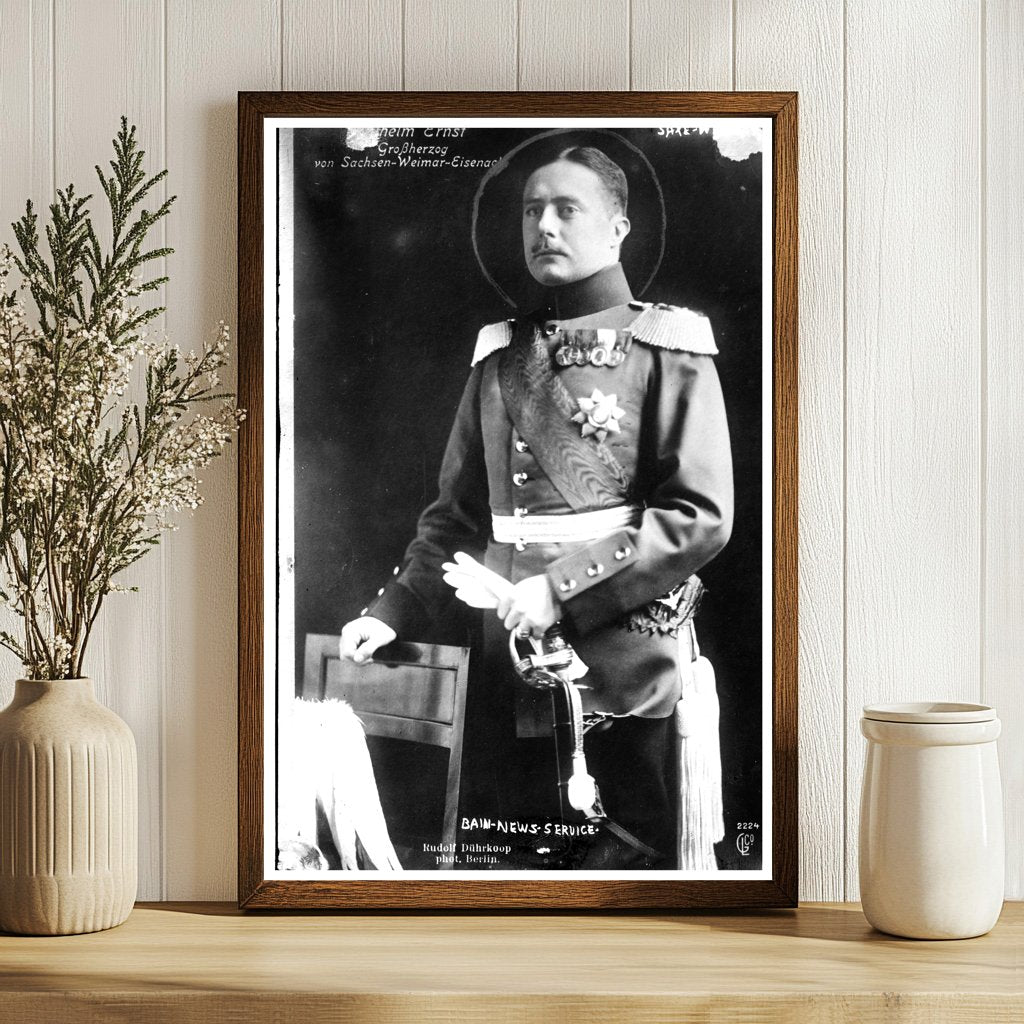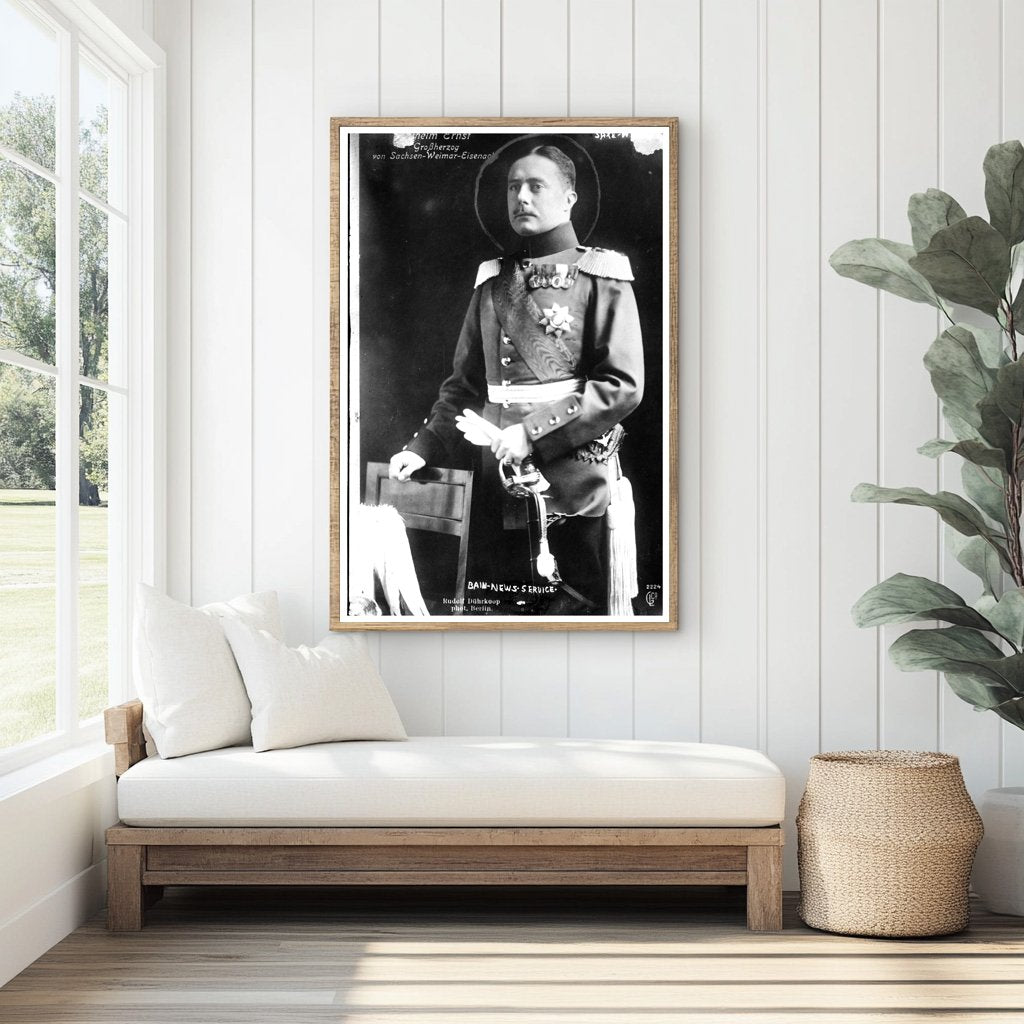


Grand Duke Rudolph of Saxe-Weimar: A Noble Portrait
This historical photograph captures Grand Duke Rudolph of Saxe-Weimar, also known as Wilhelm-Ernst, in Berlin, offering a glimpse into the world of European aristocracy in the late 19th or early 20th century. Born in 1853, Rudolph was a prominent member of the Saxe-Weimar family, which had significant influence in the region that is now modern-day Germany. The Saxe-Weimar territory has a rich history, often associated with various cultural and artistic movements, largely due to its proximity to Weimar, which fostered renowned figures like Goethe and Schiller.
Rudolphs title reflected his noble status and the responsibilities he held within the German confederation. His life unfolded during a time of great change in Europe, marked by the unification of Germany and the shifting dynamics of power among royal houses. Grand Duke Rudolph was not just a figurehead; he was involved in various political and cultural matters of his time, contributing to the governance of his duchy and its contributions to the greater German state.
The photograph itself, taken by a photographer for the Bain News Service, serves as a visual documentation of a time when the roles and lives of the European nobility were transitioning. Berlin, as a bustling center of politics and culture, was pivotal during this era, and capturing figures like Rudolph gives us insights into the lives of those who helped shape the history of modern Germany.

Grand Duke Rudolph of Saxe-Weimar: A Noble Portrait
